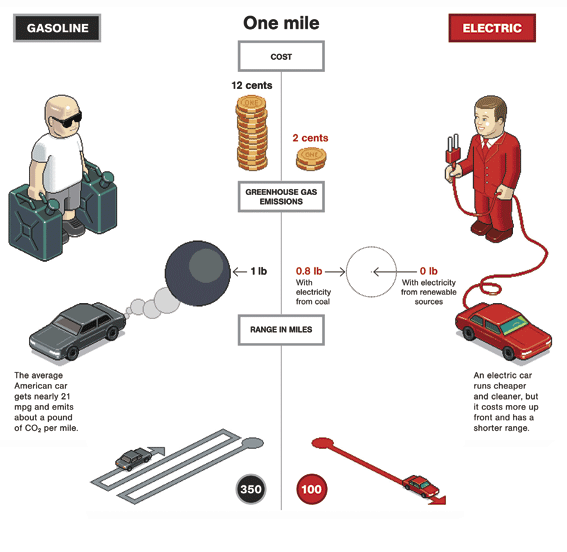

The Future of Filling Up
In the future most cars will run on electricity
from sun,wind and water.
 |
Blue water, tall and auspicious buildings, immense architecture, picturesque markets and food,
it is audacious. These tantalizing images remain imprinted on your mind long after you left the place.
Karen E. Lange
senior writer at National Geographic
Plug-in electric vehicles will hum along streets, giving off no exhaust. Oil imports and greenhouse gas emissions will fall. Smog will lift. At least that’s the vision many people are hoping will become reality. But first there are a few logistical problems to work out, including this one: Just where are all these revolutionary new cars going to plug in?
Between 2010 and 2012, car manufacturers are planning to introduce dozens of models that are either partially or completely powered by rechargeable batteries. Plug-in hybrid vehicles like the Chevy Volt, which will have a gasoline engine to fall back on after about 40 miles, will take up to eight hours to charge on ordinary 120-volt household current; some all-electric vehicles, with larger batteries designed to provide a range of 100 to 200 miles, will need 10 to 12 hours.
Many homes have 240-volt outlets (used to run clothes dryers) that could in principle cut the time in half, and much charging can be done overnight, when electricity is relatively cheap.
Still, in order for lots of people to adopt electric cars, there will have to be a network of charging stations – places where apartment dwellers, commuters who want to top off at work, and highway travelers can plug in.
“You don’t want to put out too much infrastructure if you don’t have the vehicles,” says Art James of the Oregon Department of Transportation. “But you won’t get the vehicles until you have the infrastructure.”
That infrastructure is starting to emerge in scattered places around the world, especially where governments are encouraging it. Under the Better Place plan, the company owns and tracks the use of the expensive lithium-ion batteries in its subscribers’ cars; they pay a fee to recharge, even when they’re recharging at home. That lowers the cars’ initial cost by a third or more, but customers must buy from manufacturers that have agreed to use Better Place’s standard batteries; so far only Renault-Nissan has signed on.
To allow extended highway travel, Better Place will also build switching stations where robots swap out drained batteries for charged ones in a few minutes.
Alternatively, the future may look more like the present, with drivers of any brand of car able to pull into any brand of service station. Coulomb Technologies, another California start-up, claims it could build high-speed, 480-volt charging stations that would allow highway travelers to fill up in 20 minutes – about the time it takes for a rest stop. With 117,000 gas stations in the United States today and fewer than 500 charging stations, many not even open to the public, the scale of the transition to an electric-car world is daunting.
But so are high gasoline prices and a warming climate.
Says James, “It’s going to happen quicker than you think.”